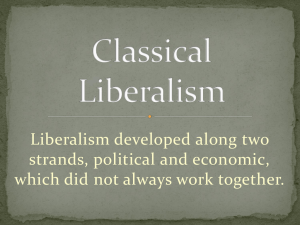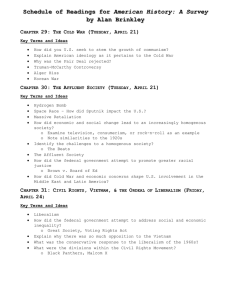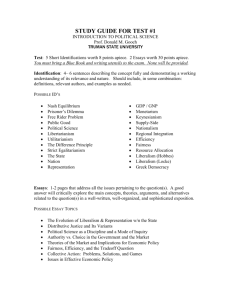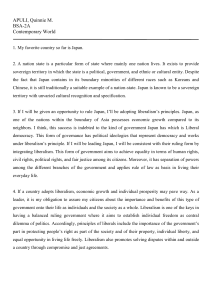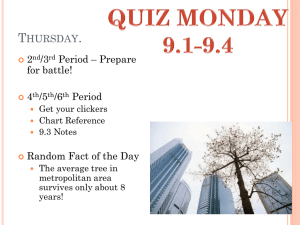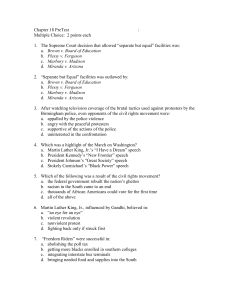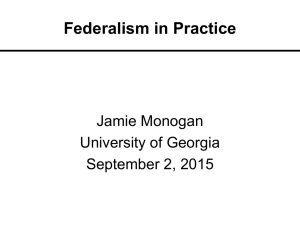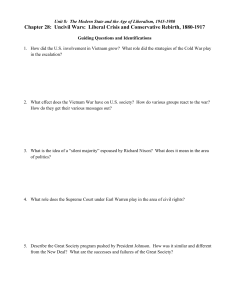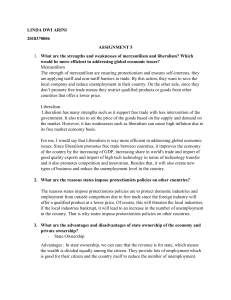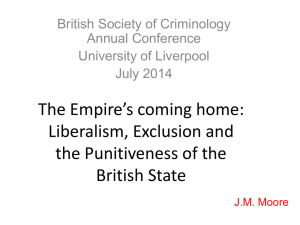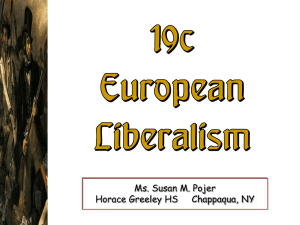APUSH
advertisement
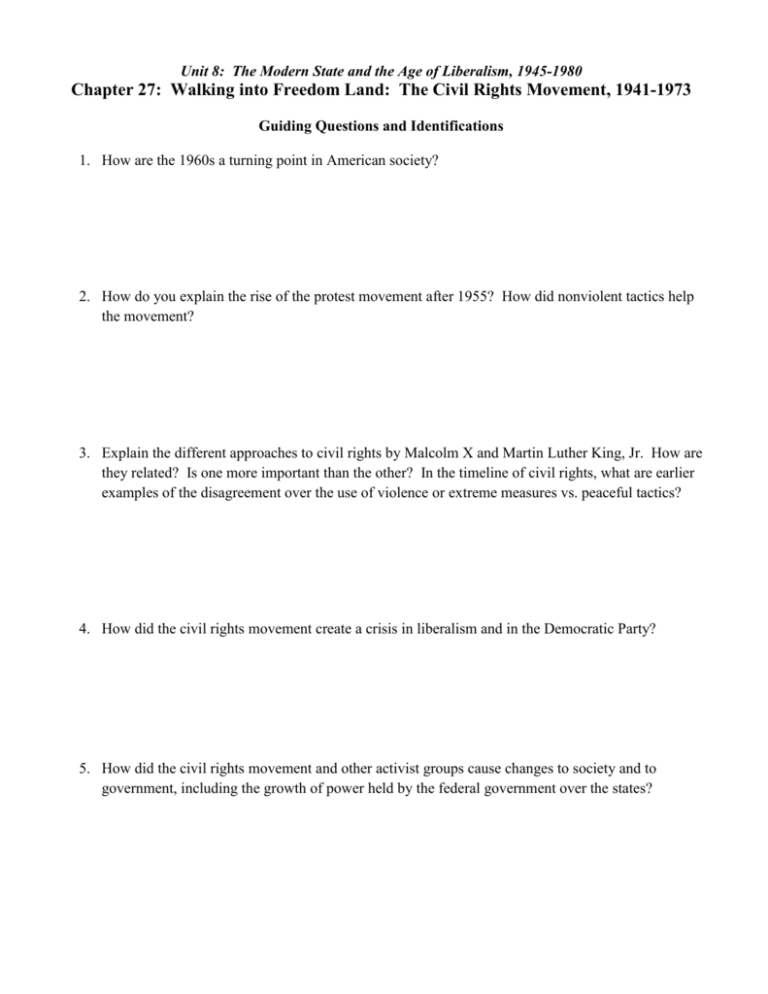
Unit 8: The Modern State and the Age of Liberalism, 1945-1980 Chapter 27: Walking into Freedom Land: The Civil Rights Movement, 1941-1973 Guiding Questions and Identifications 1. How are the 1960s a turning point in American society? 2. How do you explain the rise of the protest movement after 1955? How did nonviolent tactics help the movement? 3. Explain the different approaches to civil rights by Malcolm X and Martin Luther King, Jr. How are they related? Is one more important than the other? In the timeline of civil rights, what are earlier examples of the disagreement over the use of violence or extreme measures vs. peaceful tactics? 4. How did the civil rights movement create a crisis in liberalism and in the Democratic Party? 5. How did the civil rights movement and other activist groups cause changes to society and to government, including the growth of power held by the federal government over the states? Identifications: 27.1 The Emerging Civil Rights Struggle, 1941-1957 rights liberalism CORE Jim Crow Brother of Sleeping Car Porters A. Philip Randolph James Farmer “To Secure These Rights” Cesar Chavez Dolores Huerta Thurgood Marshall American GI Forum Brown v. Board of Education of Topeka 27.2 Forging a Protest Movement, 1955-1965 Rosa Parks Montgomery Bus Boycott Martin Luther King, Jr. Southern Christian Leadership Conference Student Nonviolent Coordinating Committee March on Washington Civil Rights Act of 1964 Mississippi Freedom Democratic Party Voting Rights of 1965 27.3 Beyond Civil Rights, 1966-1973 Malcolm X Stokely Carmichael black nationalism Nation of Islam Black Panther Party Young Lords Organization United Farm Workers American Indian Movement
